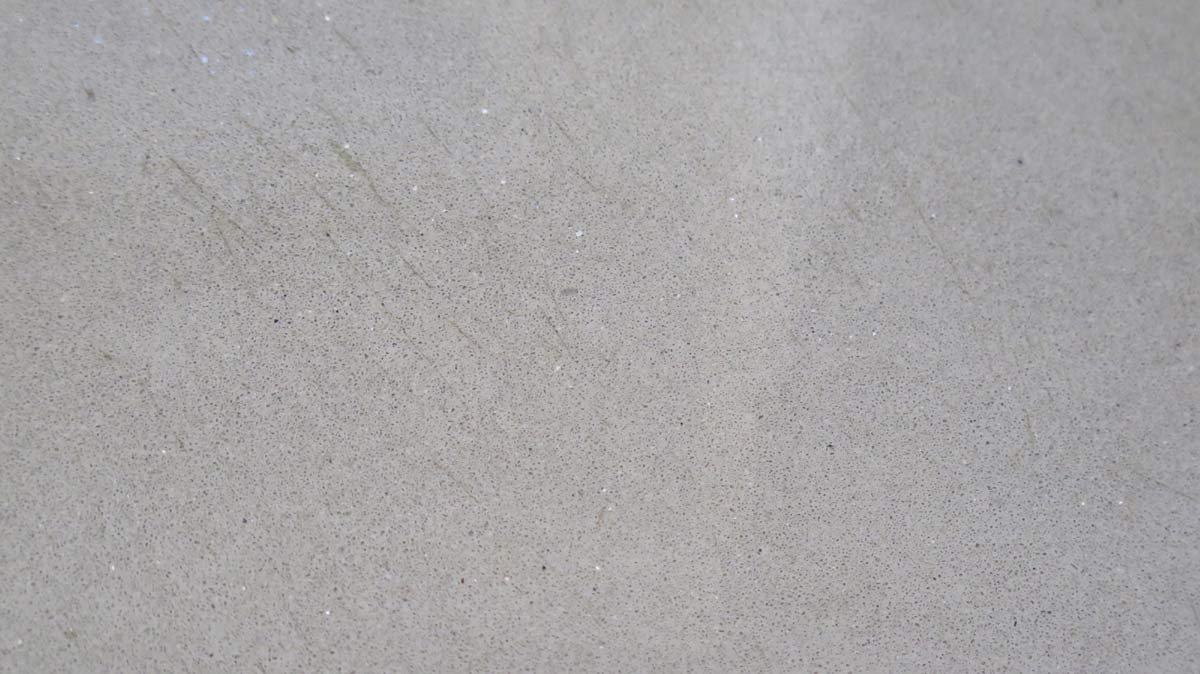Concrete countertop sealers can be separated into two basic groups: penetrating treatments and coating sealers. The debate between coatings and treatments has been raging in the concrete countertop industry for decades. Proponents of treatments cite scratching and adhesion issues as reasons not to use coatings.
They are also gun-shy about coatings because about 10 years ago, an unscrupulous company flooded the market with a defective coating that caused disastrous delamination failures on many concrete countertop professionals’ client projects, costing them a lot of money and even putting some of them out of business.
Since then, the several currently popular high-performance urethanes on the market have shown that technology has advanced, and concrete countertop professionals no longer have anything to fear from coatings. Many very successful concrete countertop professionals use coatings exclusively and have done so for years. I have always used coatings, even when they required a full suit respirator, HVLP sprayer and several days to apply properly. The popular urethanes today are applied with a roller.
Concrete Countertops Can Scratch
Here’s the catch: Unless a coating is made of diamonds, it will scratch. There is no way around this. However, I believe that this is far preferable to staining and etching for the following reasons.
There is no countertop surface that should be cut on, ever, except wooden butcher block. Soft surfaces like laminate will scratch, and hard surfaces like granite or quartz will ruin knives.
I’ve always found that customers would rather not have to worry about staining and etching (and watermarks – that should never be an issue) than have something they can cut on.
Cutting is a deliberate act, whereas spills of lemon juice, red wine, oil, etc. are accidental, or at least could be accidentally forgotten and not wiped up.
The deliberate act of cutting can be prevented simply by setting expectations with the clients, putting in the contract and the care and maintenance guide that they can’t cut on the tops and doing so voids the warranty, and if you’re really worried about it, giving them a wooden cutting board with your logo on it as a nice gift.
Setting Expectations with Scratches
Yes, it is still possible to scratch the surface without cutting on it with a knife, for example by dragging a heavy pot with something rough on the bottom across the surface, but if the coating is easily repairable (like Omega Concrete Countertop SealerTM is), and you’ve provided instructions in the care and maintenance guide, the client can easily fix a scratch. (When you purchase Omega, you receive Care and Maintenance and Scratch Repair documents to give to your clients. If you are using some other coating sealer, you should develop your own such documents.)
Setting expectations and educating your clients will prevent problems with scratches. That’s why I advocate coatings. The good ones give total protection against accidental staining and etching, are very reasonably scratch resistant, and it’s easy to prevent and repair scratches.
Clients need to know that scratches need to be fixed, because if liquids get on the scratches they will penetrate down to the bare concrete. Water is not a big deal, that will dry, but oil is very difficult to get out once it’s penetrated, and acids that get to the bare concrete will etch it. Then you essentially have a staining issue, and it can look as bad as stain-prone countertops.
Here are scratches in Omega Concrete Countertop Sealer after months of using it as a cutting board in my own kitchen (as a test to see the effects of such abuse – I would never recommend using concrete as a cutting board!):
Note that these scratches are visible only by first wetting the surface. The scratches are nearly invisible when completely dry. However, they should be repaired to prevent oils and staining agents from penetrating and causing stains within the scratches. My next article will focus on scratch repair of Omega.

